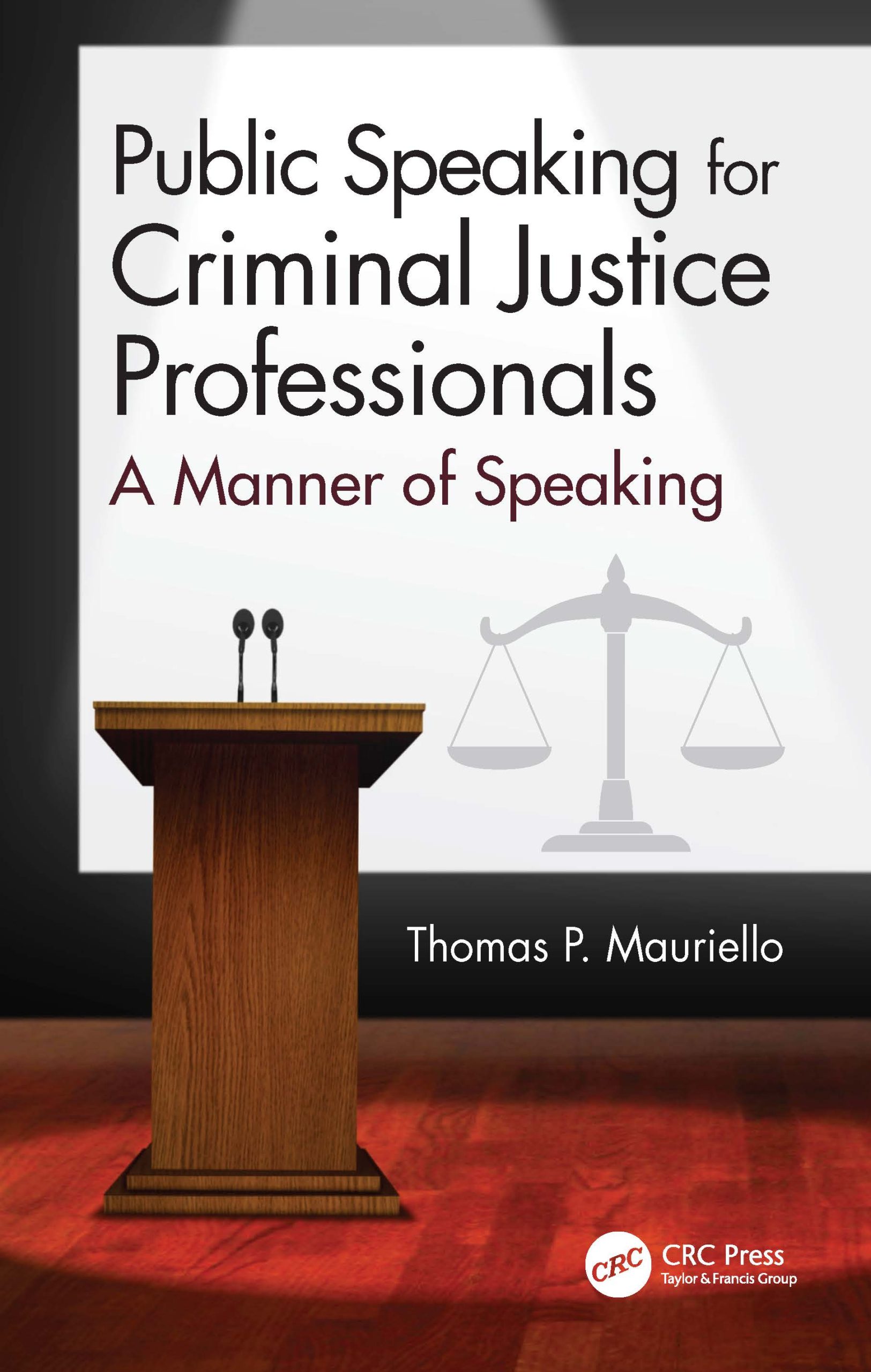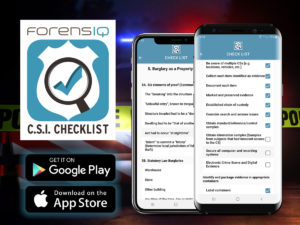The ForensicWeek.com Show – “ASPCA’s Forensic Sciences and Anti-Cruelty Projects.”
| F |
orensicWeek.com is airing Episode 54 this Thursday, March 13, 2014 at 7:00 PM (EST). The topic for discussion is “ASPCA’s Forensic Sciences and Anti-Cruelty Projects.” The show will take a captivating look at a specialized field that collects and analyzes evidence in animal related crimes. Special guest, Dr. Randall Lockwood, Senior Vice President of the American Society for the Prevention of Cruelty to Animals, Forensic Sciences and Anti-Cruelty Projects, will discuss how they work alongside animal rescuers and various agencies to collect and analyze evidence that local, state and federal law enforcement use to clinch cruelty convictions. So join host, Tom Mauriello, LIVE and archived on www.ForensicWeek.com. Thank you for watching!
Forensic Psychologists Can Provide Supporting Evidence In Court
Forensic psychologists, particularly in the city of Chicago, may be summoned to court to provide clinical assessments and other supporting evidence that can essentially resolve disputes and accelerate decision-making in complex family cases. Forensic psychology combines the disciplines of forensics and psychology to provide both objective and independent assessments to questions and issues concerning law and the legal system. With this in mind, forensic psychologists can assist families in court by providing assistance with child custody, assessments of addictive disorders, psychotherapy and rehabilitation, and forensic psychology and financial distress.
Interested in reading more about forensic psychologists? Click here for the full article!
Source: Forensic Nexus
[Abstract written by Noel Andres, ForensIQ Intern 3/6/14]
Fun Crime Scene Cheat Sheet Infographic
This infographic gives a quick visual representation of the different types of crime scene professionals and the work each must contribute to collectively solve a crime. Quickly yet clearly, this inforgraphic summarizes some of the key concerns and uses of evidence found at a crime scene by giving brief descriptions on: how to lift fingerprints, suggesting clues to look for while estimating the time of death, the use of forensic entomology, analyzing DNA profiling and bloodstains patterns, and describing the process of how an autopsy is completed. Do not substitute this crime scene cheat sheet infographic for training, but use it as a guide for recalling tips and advice of the different types of crime scene professionals and their work.
Click here to view the fun crime scene cheat sheet infographic!
Source: Forensic Nexus
[Abstract written by Noel Andres, ForensIQ Intern 3/6/14]
Study Shows How Dogs are Trained to Detect Explosives
Training a dog is no easy feat. Training a dog to detect explosives is considerably much more difficult. This article overviews a study conducted by Indiana University-Perdue University Indianapolis that explored the method used to train police dogs and determine its effectiveness. With the results of the study, options can be discussed on what can be done to make canine detection legally admissible evidence in court.
Click here to view the article.
[Abstract by Walter Tates, ForensIQ Intern. 030614]
The ForensicWeek.com Show – “Unsolved Histories – The Roots of Forensic Genealogy,”
| ForensicWeek.com is airing Episode 53 this Thursday, March 6, 2014 at 7:00 PM (EST). The topic for discussion is “Unsolved Histories – The Roots of Forensic Genealogy,” with special guest, Dr. Colleen Fitzpatrick, Forensic Genealogist, author and consultant for Identifinders, Huntington Beach, CA. Forensic genealogy has established itself as the modern approach to family research and finding the “right” people for the legal profession, and for law enforcement. It does not replace conventional methods for finding people, it enhances them. So join host, Tom Mauriello, LIVE and archived on www.ForensicWeek.com and learn about this fascinating field of forensic science. Thank you for watching!
|
Legal Professionals – Spend Two Days Learning the Essentials of Forensic Science
WVU Forensic Science Initiative, in collaboration with the National Institute of Justice, will host a free two-day program entitled, Essentials of Forensic Science for Legal Professionals, for legal professionals to expand their understanding of forensic science topics. The program will be held March 11 – 12, 2014, on the West Virginia University Campus in Morgantown, WV. Interpretation of physical evidence, wrongful arson conviction, bias in forensic science evidence, and basic statistical concepts in forensics are a few of the topics that will be discussed. Members of the academic community, lab personnel, and legal specialists will instruct and apply real-world examples to the content presented in this two-day program.
Register now to attend the free Essentials of Forensic Science for Legal Professionals Program. The first 20 individuals to register will receive a free hotel stay while attending the two-day training program! Registration closes March 3, 2014, 5:00 p.m. ET.
For more information about the program and to register now click here!
Source: West Virginia University
[Abstract written by Noel Andres, ForensIQ Intern 2/27/14]
Nile Blue Improves Crime Scene Fingerprinting
West Australian chemists, at Curtin University, are developing a new technique that could provide crime investigators with a safer, simpler and more versatile method for obtaining good quality fingerprints from non-porous surfaces and in wet or humid conditions.
The compound Nile red is presently used, providing investigators with both contrast and photoluminescence, making it easier to detect fingerprints on non-porous materials. Although proven useful, Curtin University’s Professor Simon Lewis states that this is expensive and the process uses toxic materials that pose health and safety risk to personnel. Professor Lewis’s team of researchers have found that when the compound Nile blue A is made up in water, a small amount converts to Nile red in sufficient quantities to develop fingerprints. Nile blue A is a less expensive reagent and can be used on non-porous surfaces like ceramic, glass, plastics, and adhesive tape.
Professor Lewis also states that while more work needs to be done, testing shows great potential for the new process, particularly in staff training and for use in developing countries. The main objective of his Australian research team is to improve crime scene fingerprinting by finding a way to obtain clear prints from different surfaces and extracting clear prints in wet or humid conditions.
Interested in reading more about improvements in crime scene fingerprinting? Click here!
Source: Science Network Western Australia
[Abstract written by Noel Andres, ForensIQ Intern 2/27/14]
The ForensicWeek.com Show airing Episode 52 – Exposing Junk Science in the Courtroom
| ForensicWeek.com is airing Episode 52 this Thursday, February 27, 2014 at 7:00 PM (EST). The topic for discussion is “Exposing Junk Science in the Courtroom.” Their special guest is, Dorothy Clay Sims, attorney and author of the book, “Exposing Deceptive Defense Doctors,” who has spent over a decade teaching lawyers tips on exposing bad experts. Ms. Sims is also retained in criminal cases to assist the defense attorney in cross-examining the state’s forensic expert, as she did most recently in the Casey Anthony case. So join host, Tom Mauriello, LIVE or view the recorded show archived on www.ForensicWeek.com . Thank you for watching!
|
“Why some people don’t have finger prints”
It’s always been a thought that someone who wasn’t born with fingerprints could commit the perfect crime. But how could this rare condition happen? Dermatologists refer to this condition as “immigration delay disease”. This is because it causes problems when the person tries to move to a different country. But the scientific term is adermatoglyphia. For years this phenomenon was not understood till a couple of years ago when dermatologist figured out that this was related to a genetic mutation. This was discovered two dermatologists studied a Swiss woman with the condition. Come to find out this was a condition that ran in her family. The dermatologist found that this was caused by a section of DNA that codes for protein. This mutated gene blocks the protein from forming. People who have this disease only have symptoms of having no fingerprints and fewer sweat glands. Without this rare family researchers may have never discovered the cause.
Click here for full article
Source: Mother Nature Network
[Abstract written by Alicia Terrell, ForensIQ Intern, 021914]
New Technology uses Body Odor for Identification
In Spain, scientists have created an “electric bloodhound” that can smell out individuals based on identifying qualities. They say that there are patterns that are recognizable in humans. These patterns are steady therefore everyone has their own odor that would separate them from others. These scientist claim that this technology is so correct that it could replace things like fingerprinting or iris scanning. This would be a less aggressive and less intrusive way for personal identification. This type of technology could be used in places like airports or borders checkpoints where the only identify verification are based on physical resemblance from a photo.
Click here for full article
Source: Washington Times
[Abstract written by Alicia Terrell, ForensIQ Intern, 021914]
“Japan and U.S. to share Criminal fingerprint database”
The United States and Japan have made an agreement on sharing fingerprint databases that would benefit criminal investigations. This database of international fingerprints will aid law enforcement authorities to prevent domestic and foreign threats. This agreement will provide Japanese authorities with data from the FBI and the Department of homeland security. Japan is the first country the U.S. has shared fingerprint databases with.
Click here for full article
Source: Japan Daily Press
[Abstract written by Alicia Terrell, ForensIQ Intern, 021914]
Criminal Justice Related Internships Available at Illinois Central College
Illinois Central College is offering internship opportunities for students and graduates of their Criminal Justice, Law Enforcement and Paralegal Programs. The Criminal Justice Internship (Criminal Justice, Law Enforcement, and 9-1-1 Dispatch) is being offered for the Summer of 2014 and has been rated by students as their most rewarding and favorite elective course. Guidelines for how to apply, deadlines for required meetings, course requirements, and people to contact for more information about the program are listed on their website. If you are a student or graduate of ICC’s Criminal Justice, Law Enforcement and Paralegal Programs, do not miss this opportunity to gain experience in the criminal justice field.
Click here to visit the website.
[Abstract written by Walter Tates, Forensiq Inc. Intern. 021914]
ForensicWeek.com Broadcasting LIVE from Seattle, WA
ForensicWeek.com is broadcasting this week’s show on location from the American Academy of Forensic Sciences (AAFS), 66th Annual Scientific Meeting in Seattle, WA. The show will be LIVE from the Washington State Convention Center on, Thursday, February 20, 2014 at 9PM (Eastern) – 6PM (Pacific) Time. This episode showcases the Meeting’s Annual University Fair with representatives from an estimated 10 universities nationwide promoting their accredited forensic sciences programs. So join host, Tom Mauriello as he interviews these forensic science educators and brings the benefits of the University Fair content right to your desktop and mobile devices, on www.ForensicWeek.com. This special webcast is being brought to you through the support of our co-sponsors, Sirchie Laboratories and Dr. Richard Saferstein, Forensic Consultant and Author of the most well-known forensic science textbooks worldwide.
Touch DNA
DNA evidence is crucial when it comes to identifying suspects, victims, and whomever else is of interest in an investigation. Finding and retrieving this evidence is a delicate process which requires technique and proper knowledge of retrieval in order to maintain the integrity of the evidence. This article provides the reader with steps to ensure the proper attainment of DNA evidence left behind by touch.
Click here to view the article.
[Abstract written by Walter Tates, ForensIQ Intern 021214]
WVU offers Free Forensic Workshops for Middle & High School Students
The popular CBS television show CSI: Crime Scene Investigation, has manipulated the public into believing that crime scene evidence can be instantaneously analyzed, evaluated, and eventually linked to suspect; all within a 60 minute episode. This can be best described as the CSI effect.
Institutions across the United States want to bring the public back to reality from this fictional ideology, WVU is no acceptation. Charles Bily is an instructional coordinator with West Virginia University’s Next Generation Forensic Science Initiative, which is offering free workshops to both middle and school students. Fingerprints, Footwear impression evidence, Firearm identification, and Bloodstain pattern analysis workshops will each take place on February 22, March 22, April 26, and May 24, at West Virginia University’s Crime Scene Complex. Students who attend these workshops will learn both the process and value of lifting fingerprints and footwear impression; the importance of ammunition in firearms identification, and how to interpret bloodstain patterns at a crime scene.
Bily stated that it is a “really neat experience for the kids to take classes in that complex because that normally is reserved for the forensic science majors, So this is an opportunity for kids that don’t go to school here to get some experience in that complex.” Workshops are one and a half hour long, limited to a maximum enrollment of 25 students and are filled on a first-come, first served basis.
For the full article and to register for these workshops click here!
Source: Charleston Gazette
[Abstract written by Noel Andres, ForensIQ Intern, 2/12/14]






